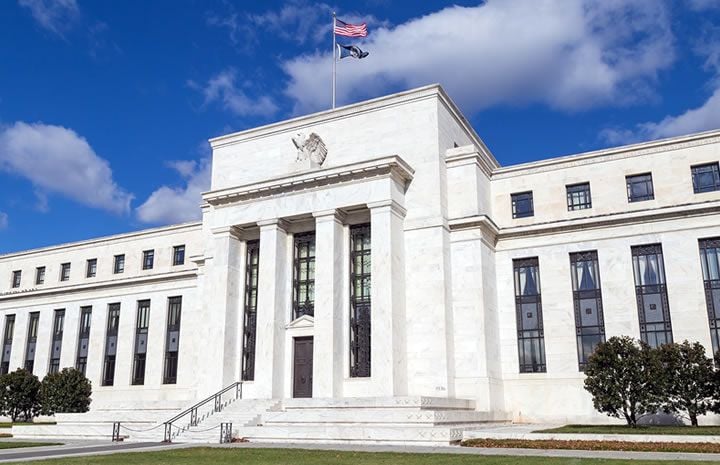US Dollar Cedes Ground to G10 Rivals as Fed Looms, Tax Reforms and "Dot-plot" in Focus
- Written by: James Skinner

With Washington moving rapidly toward tax reform, all eyes are on interest rate and inflation forecasts in the Federal Reserve's "dot-plot" this week.
The US Dollar ceded ground to many of its G10 rivals at the beginning of the week, with mixed price action across the basket appearing emblematic of expectations for the days ahead.
Its tepid performance comes closely on the heels of the November nonfarm payrolls report, which showed the US economy continuing to add new jobs at an enviable clip.
Still, Dollar bulls have been kept in check by the monthly measure of wage growth, which showed sufficient underlying inflation pressures are still missing in action.
All of this is relevant ahead of Wednesday’s Federal Reserve interest rate decision, scheduled for 19:00 London time, which marks the main event for the Dollar this week.
“They’re almost certain to raise rates by 25bp, so the focus will be on the dot-plot and on Janet Yellen’s Press Conference,” says Kit Juckes, chief foreign exchange strategist at Societe Generale.
Economists expect the Fed to raise its interest rate for the second time in 2017 when the Federal Open Market Committee concludes December’s meeting Wednesday, which will take the Federal Funds rate to 1.5%.
“The meeting should deliver a rate hike that is largely priced, with even odds that the Committee adds a fourth dot to its 2018 projections,” says John Normand, an economist at JPMorgan.
Markets have priced Wednesday’s interest rate rise to perfection and so the greenback’s response to this in itself is unlikely to be noteworthy. Most important for traders will be the “dot plot”, which is FOMC rate setters’ non-binding view of likely path of US inflation and interest rates.
“The Fed has only upgraded its rate view once in three years, so a nudge coming when the market only discounts two hikes for 2018 could be bearish for short/intermediate Treasuries, bullish for the dollar versus most currencies,” JPMorgan’s Normand adds.
The Dollar index was quoted 0.05% lower at 93.90 during early trading in London Tuesday. The Pound-to-Dollar rate was quoted 0.01% higher at 1.3347 and the Euro-to-Dollar rate was called 0.02% lower at 1.1772.
FOMC rate setters have kept a steady hand in 2017, figuratively speaking, continuing to project an eventual return of inflation to its 2% target despite repeated signs that underlying inflation pressures are still weak.
While that might change in the short term, with the implementation of President Donald Trump’s tax cuts and reforms, financial markets are yet to be convinced.
“With the FOMC putting the tax cuts into their baseline forecasts, the Summary of Economic Projections is likely to show faster growth, a lower unemployment rate, and a faster pace of rate hikes, but no revision to inflation,” says Seth Carpenter, an economist at UBS.
Interest rate markets have priced-in a total of three hikes from the Federal Reserve between now and the end of 2018, according to Societe Generale’s Juckes, although increasing numbers of economists are now warning the Fed may move faster than the markets expect.
“They'll also likely build in an additional rate hike in 2018 and 2019, with the fed funds rate above its long-run neutral level by the end of 2019,” adds UBS’ Carpenter, referring to the Federal Reserve’s “dot-plot”.
The addition of another dot to the plot of policymaker expectations could give the US Dollar a renewed boost into year-end, at a time when the uplift from expectations of tax reforms has begun to wane.
"Although we do not expect Janet Yellen to overly modify her choice of judicious language, the President’s tax cuts – via the ‘dot plots’ - could feasibly allow far greater conviction in the speed with which policy normalization should proceed," says Neil Mellor, a senior currency strategist at BNY Mellon.
A joint committee of house and senate republicans are currently working to draft a unified tax-bill for congressional approval, that incorporates all of the key elements of President Trump's proposed tax reductions and reforms.
With mid-term elections approaching in the 2018 year, and after the high-profile failure of republicans to repeal and replace the affordable care act, the political imperative to pass the tax bill in a timely manner for its implementation in early 2018 is significant.
"We have said that the single largest upside risk to our baseline forecast is that the Congress passes a large tax cut, which now looks much more likely," says UBS' Carpenter.
"The details and timing of the tax cuts matter and are still being negotiated. Without any specifics, we have estimated that a tax cut on the order of what is being debated could result in a boost to real GDP growth on the order of ¼ to ½ percent per year in 2018-19."
Get up to 5% more foreign exchange by using a specialist provider by getting closer to the real market rate and avoid the gaping spreads charged by your bank for international payments. Learn more here.




